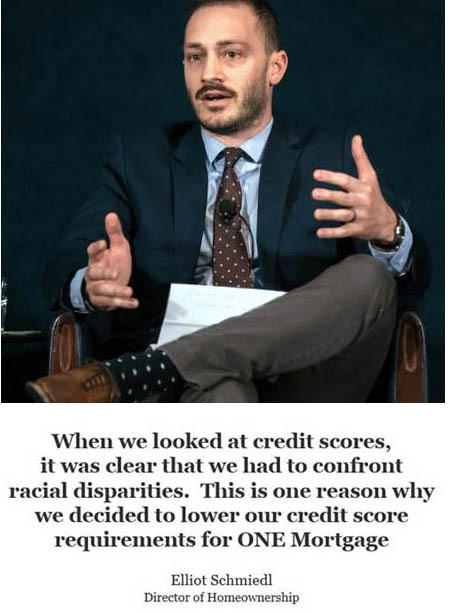Posted on January 28, 2019
(Note: This article originally appeared in Banker & Trademan. For an update on results of the first year of lowering credit scores, click here).
By Ellliot Schmiedl
We need to do more and we can.
The 25th annual Changing Patterns study by the Massachusetts Community & Banking Council (MCBC) made this abundantly clear as it paints a limited picture of homeownership opportunity. Just five cities accounted for 45.7 percent of all loans to black borrowers in Massachusetts in 2017. Black borrowers received no home-purchase loans in 129 of the state’s 351 cities and towns and only a single loan in 50 communities.
Equally concerning is that those who did manage to buy homes often financed them with more expensive loans. The study found that in 2017, 47 percent of loans to black borrowers and 44 percent to Latino borrowers were done with Federal Housing Administration (FHA) loans. The MCBC report also shows how effective mortgage companies are at using FHA loans to boost homeownership for low- and moderate-income borrowers of color in our gateway cities.

My intention here to not to bash FHA loans. They are decent loans. My wife and I bought our first home with an FHA loan. The point is they aren’t always the best loans. MHP’s ONE Mortgage Program is the state’s most affordable loan program for first-time buyers. Loan products offered by MassHousing also offer better terms than FHA.
The reason buyers opt for FHA loans is because they are accessible. FHA loans are offered by many lenders, have a lower credit score requirement, higher debt to income ratios, and no homebuyer education requirement. This means that borrowers with lower credit and more debt can still buy their first home with FHA.
What FHA borrowers likely don’t know is that their monthly mortgage payments will be hundreds of dollars more. This is why delinquency and default rates of FHA loans are consistently three to four times higher than our state-sponsored programs.
So the challenge for all of us is to make affordable programs like ONE Mortgage more accessible and do everything we can to market them so homebuyers can make an informed choice. This is especially true for ONE Mortgage. ONE was founded in Boston. Since 1990, ONE and its predecessor, SoftSecond, have made over 21,000 home loans to low- and moderate-income first-time buyers, over half to people of color.
For the past two years, MHP has been taking a hard look at the credit requirements for the ONE Mortgage. During the Great Recession, credit score, debt-to-income and loan-to-value requirements were tightened, and for good reason. Ten years later, the economy’s recovered but most of those tougher credit standards remain. We at MHP realized that to achieve our mission of increasing opportunity, we needed to make it easier to buy a home, not harder.
When we looked specifically at credit scores, it was clear that we had to confront racial disparities. A 2014 Federal Reserve Bank of Boston study found that black and Latino home purchasers were at a distinct disadvantage when it came to credit score. Their research showed that among those who purchased homes in 2014, the majority of black and Latino borrowers had credit scores below 660. However, the majority of their white counterparts had credit scores in the mid 700’s. This reality puts borrowers of color at a distinct disadvantage when it comes to qualifying for an affordable mortgage product.
This is why in October 2018, MHP decided to lower our credit score requirements for the ONE Mortgage by 20 points, from 660 to 640 on single-family homes and from 680 to 660 on multi-family homes. Our research, based on the performance of more than 5,000 existing loans, told us that we’d reach a new, untapped group of borrowers. It also told us that this group was more heavily black and Latino, and that these borrowers presented only a nominal level of increased risk.
Throughout our research and implementation, I was encouraged by the number of lenders who were not only comfortable with this change, but wished it had come sooner. This feedback reminded me that while we always need to manage risk when combining public money and bank financing, we also need to be innovative and push the status quo to provide more opportunity.
(Elliot Schmiedl is MHP’s homeownership director. This story is excerpted from remarks he made during a panel discussion about the Changing Patterns report on Dec. 4, 2018).
